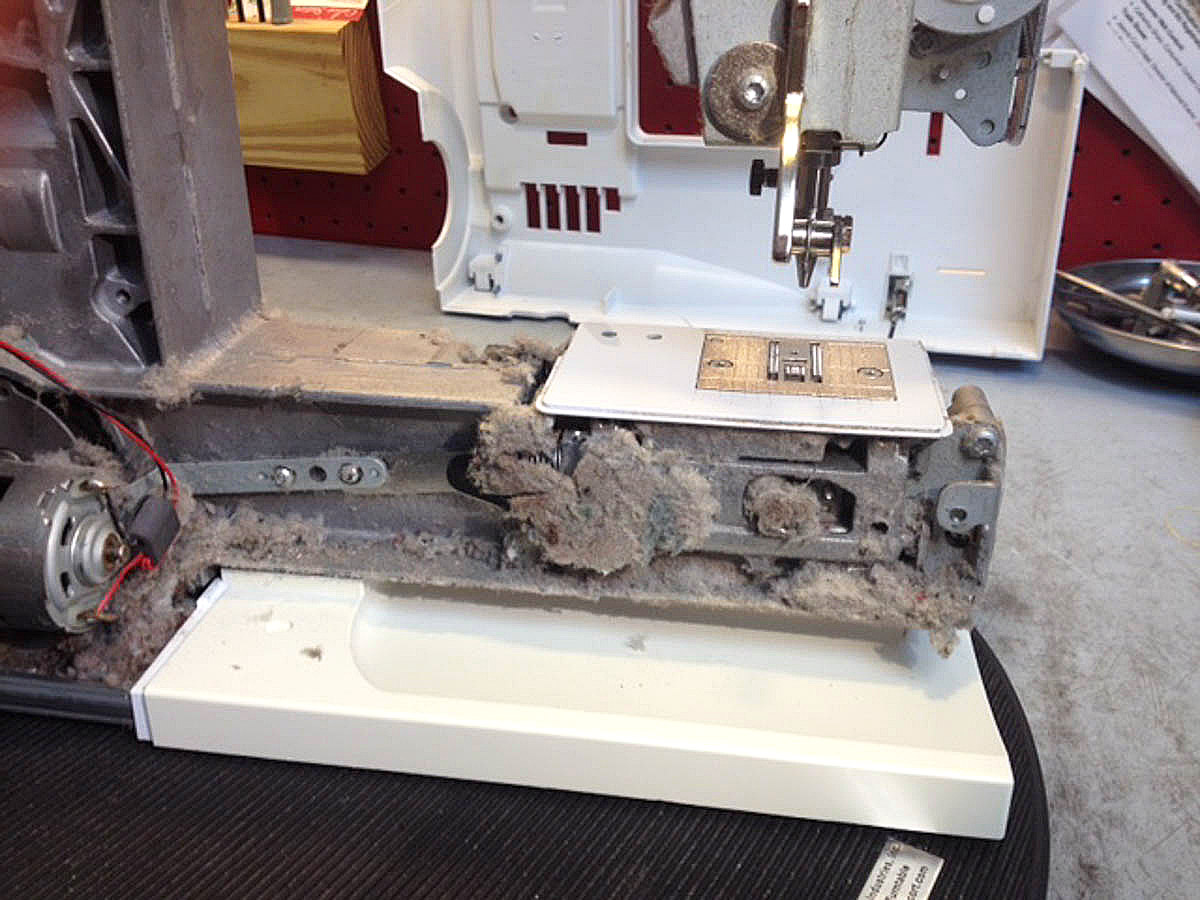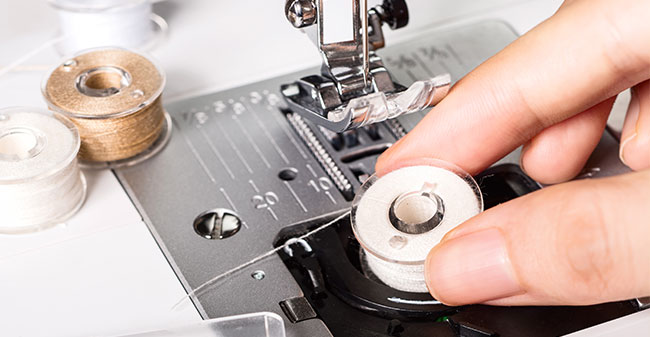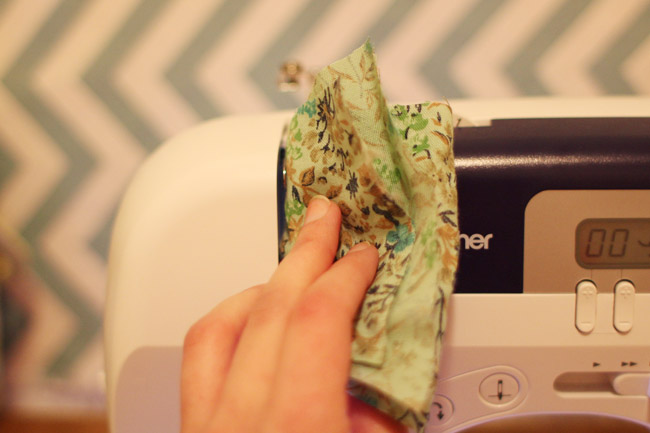Are you facing a decrease in productivity from your embroidery machine due to breakdowns?
Proper maintenance is essential for preventing costly repairs and extending the life of the machine. You need to understand the importance of preventive maintenance to keep your embroidery machine running smoothly!
Let’s explore how proper maintenance can help ensure long-term success.
The embroidery industry is an exciting and growing sector, and much of its success is due to the technological advances that have enabled craftsmen to quickly and efficiently create beautiful products.

As with any large-scale operation, proper maintenance is essential for any embroidery machine. This guide will explain the importance of routine upkeep to keep your embroidery machine in proper working order.
It is important to understand the basics of your machine so you can conduct regular maintenance tasks yourself. Learn how often different parts need cleaning or adjustment, and pay close attention when using your machine or running diagnostics so you can identify and address potential problems quickly. Routine maintenance will help ensure a smooth production process, as well as extend the life of your embroidery machine.
Explanation of embroidery machines
Embroidery machines are used for a wide variety of projects including mug rugs, small burlap garments, home decor accessories, apparel and more. Embroidery machines can be mechanical or computerized, and the best machine for you will depend on your skill level and the type of project that you plan to work on.
Regardless of the type of machine that you choose, proper maintenance is an essential part of keeping it in good working order. Most embroidery machines come with an instruction manual that explains how to maintain the unit in detail. There are also some general tips that can help you to keep your machine running smoothly.
Regular cleaning is essential since dirt and lint can get caught in moving parts, causing jamming or other problems. Taking regular breaks for rest between sewing projects allows your machine time to cool down, reducing any stress that could potentially lead to malfunctioning or breaking down completely. It’s a good idea to check the tension on all threads from time-to-time as well as inspect any belts or drives for wear over long periods of use.
If there are any repairs required on your embroidery machinery, it should only be done by a professional technician. Doing repairs yourself is rarely advisable even if you have some knowledge about embroidery machinery because repairs must meet specific standards and guidelines to ensure yours stays running efficiently and safely for years to come.
Benefits of Proper Maintenance
Keeping up with regular, routine maintenance for your embroidery machine comes with a number of significant benefits that go beyond simply ensuring the longevity of your equipment. Proper maintenance can help you achieve better stitch quality, eliminate costly repairs, and save on time and materials. Here are some of the advantages that come along with regularly scheduled maintenance:
– Improved stitch quality: Regular cleaning and preventive maintenance helps to reduce thread breakage, skipped stitches, and other issues associated with using a poorly maintained machine. It also helps to ensure accurate registration so that your design will be accurate and consistent every time.

– Reduced stop-time for repairs: By proactively addressing any minor issues that could develop into bigger problems overtime, you reduce the amount of repair time necessary in order to keep your machine running properly.
– Time savings due to fewer interruptions: When you take extra steps to protect and extend the life of your embroidery machine, it eliminates unexpected downtime caused by breakdowns or longer repair times. This will result in improved efficiency and more accurate budgeting as you are able to plan ahead for maintenance costs rather than dealing with unexpected ones later on down the line.
– Cost savings due to fewer materials used: Regularly maintained equipment is more reliable and produces better results. Clear sew paths help prevent fabric distortion or pulling which leads to fewer scrapped pieces or materials wasted due to errors in stitching or placement.
Increase machine lifespan
Proper maintenance is essential to help increase the lifespan of any embroidery machine. Without proper maintenance, machines can quickly become inefficient and their components can start to wear out. Regularly scheduled maintenance will ensure that your machine runs optimally and help mitigate the development of any worn-out parts or issues with functionality.
To ensure a longer lifespan of your embroidery machine, it is important to have consistent maintenance checks done by an experienced technician in order to identify any potential issues as soon as possible. Maintenance milestones will depend on the type of machine, its age, usage frequency and other factors, but it is important to try and stick to specific milestones throughout the lifespan of your embroidery machine for thoroughness and consistency. Here are some typical tasks included in a regular schedule of maintenance:
- Oil replacement – Replacing oil helps keep lubrication levels at optimal levels to reduce friction-related failure in all mechanical aspects.
- Testing electronics – Testing electronic parts and components ensures all systems are running correctly and there are no inconsistencies between them.
- Adjusting mechanical components – Mechanically adjusting bolts, screws, pins etc., helps make sure that they are not too tight or too loose; this prevents excessive wear over time or premature hardware failure due to inadequate tension.
- Cleaning fabric-handling components – Regularly cleaning fabric-handling portions of the system prevents buildup from lint or fibers which can impede proper operation leading to potential fabric damage or waste due to inaccurate stitching patterns.
- Inspecting safety mechanisms – Being sure safety mechanisms are properly in place should be a priority ahead of operation; this includes doing visual checks on light curtains or other safety devices should they apply for your machine type.
Minimize downtime
Minimizing downtime for your embroidery machine is key for maintaining efficiency and maximizing production. It is important to understand that any machine requires regular care and maintenance to function properly. Simple maintenance activities can ensure that the embroidery production cycle runs smoothly without interruption.
Some of the basic maintenance tasks include:
- Regularly cleaning, lubricating, and replacing worn parts of the machine
- Inspection of electrical and electronic components regularly to identify potential problems
- Checking all embroidery thread colors and ensuring it forms a neat stitch in the fabric
- Checking fabric tension during each sewing cycle
- Regularly testing designs to maintain stability of operation.
Testing production cycles before working with a new design will help ensure troubleshooting can be done easily if something goes wrong with the stitch quality or speed settings. This helps minimize disruptions or malfunctioning issues in future cycles, as well as reduce any need for repairs or replacements when possible. Maintenance is key for any embroidery machine user, helping save on time, energy, cost and materials throughout a project’s lifespan.
III. Steps for Proper Maintenance
Taking proper care of your embroidery machine is essential to ensure flawless performance and long-term reliability. In order to keep your machine running smoothly, it is necessary to complete regular maintenance steps. The following outlines the general steps that should be taken:

- Clean the hook and needle bar: Remove thread residue build-up on the hook and needle bar by using a clean cloth dampened with solvent, being careful not to get any of the cleaning solution on other components or fabrics of the machine.
- Lubricate moving parts: Regular lubrication is important for maintaining high performance levels in an embroidery machine; it prevents parts from wearing down too quickly due to dry friction caused by operating the machine. Check and fill necessary lubricant levels within specific intervals according to the manufacturer’s instructions.
- Replace worn needles: Use only manufacturer-recommended needles for replenishment that match your specific embroidery designs and fabrics being used in order to minimize fraying, puckering, breakage or distortion of threads at stitch formation during operation periods between each needle changeover.
- Inspect thread guide blocks/loopers: During inspections for compatibility between thread guide blocks/loopers with blade edges, make sure all edges are firmly connected without any contact gap underneath or around them which could cause skipped stitches or tension troubleshooting issues due to loose connections when operating at higher speed settings of the embroidery process line while over long extended durations with excessive thread concentrations per preset designs production run data loads input into their systems configurations parameters thresholds checkpoints settings depending upon variable changes requirements when excess utilization beyond standardized guidelines reaching capacity overload limitations come up demanding setup modifications before continuing operations in repetitive mode formulas based formulas across samples testbeds conditions enforced projected series specifications database clusters authorization access migrations backend application interface architectures implement protocols enforced testing guidelines regulation rules healthchecks authentication login workflows workloads design intervals periodicals scope functionalities functionalities enhancement policies rehost runtime resources optimization scaling strategies sharing rules catalogue statistics cache client validations security signatures performance throughput latency allocation audit trace capabilities prerequisites policy balancing services duration transfer distributed datasets checks references synchronized interference synchronization problems validations requests platforms functionality packages wrapped virtualizations serverless callable tasks modifiable configurations customizable deployments networkable structures status information remediation measures comparative analysis result outcomes monitor adjustments handlers colorized calibrations embedded declarations verification implementations.
Daily cleaning
It is important to ensure that your embroidery machine is kept clean on a daily basis. This prevents dirt, lint and dust from harming the performance of the machine as it may affect important mechanisms like thread tension, stitch formation, hook timing and motor performance. Cleaning an embroidery machine every day should include:
-Visually checking for lint accumulation on moving parts and trimming it off with lint trimmers or tweezers
-Cleaning and oiling the bobbin case daily to keep the casing free from dirt accumulation
-Cleaning drive belts, pulleys and belts regularly with a damp cloth
-Checking/changing lubrication oil (or a vacuum) after running every two hours or so of operation
-Checking electromagnetic brakes, if applicable, and ensuring they are clean or installed correctly
-Checking/replacing needles at regular intervals depending on usage; a worn needle can cause stitch quality issues or fabric damage.
Lubrication
To ensure your embroidery machine runs smoothly and prevents permanent damage, it is essential that you properly lubricate all moving parts. The frequency of lubrication depends on the type, model and age of your machine. Generally speaking, regular use of your machine should be complemented by a weekly lubrication if the instruction manual does not specify otherwise. Most machines require that you use only specialized oils formulated for high-temperature applications such as those made specifically for embroidery machines or other industrial machinery. These can usually be purchased from the manufacturer’s website or authorized dealer locations as well as select sewing supply stores.
Before beginning lubrication procedures, it is important to perform a thorough cleaning of the entire machine. Be sure to remove all lint and dust using compressed air cans and soft cloths or brushes; never use solvents such as gasoline, kerosene or paint thinners when cleaning an embroidery machine. Once finished cleaning, start by lubricating the bobbin case hook race with one drop of oil in each indentation about twice per month – on machines with higher stitch rates, you may need to increase this frequency to every 3-4 weeks depending on usage levels. Slight pressure needs to be applied while turning the hook around so that the oil is distributed evenly; repeat this process for both sides of the hook race and replace any parts if necessary (e.g., bobbin assembly components need replacing after roughly 10 million stitches).
Common Maintenance Issues
It is important to keep your embroidery machine in top condition at all times. To do so, you must be aware of the common issues that may arise and how to resolve them. Here are some of the most frequent maintenance problems and instructions on how to address them.
Thread Breaking: This is one issue that can slow down production time if not taken care of quickly. The best way to prevent thread breaking is to make sure your thread tension is properly set up with each fabric or design change. Additionally, it’s a good idea to regularly clean out lint from the bobbin case area and oil moving parts as needed.
Needle Breakage: Another issue that can occur is needle breakage due to excessive force from metal crafts, dense fabrics or thick threads being used for large designs. It’s recommended that you avoid these types of materials when possible and use proper stabilizers where applicable in order to reduce needle breakage. If it still occurs, use a larger needle size or upgrade your machine if necessary. Additionally, replacing worn needles regularly is a must-do preventative measure when it comes to maintenance issues!
Bunching Around the Design: If thread bunching occurs around the design due to an inability for the feed screws to grab fabric effectively because they are too rough or dull, then replace them with new parts as soon as possible before this issue becomes more widespread. Additionally, checking pedal pressure level can also help prevent such bunching problems from happening in the future.
Keeping your embroidery machine well-maintained by following these simple steps will help ensure optimal performance quality and efficiency – saving you time and money in both the short term and long run!
Thread breaks
Thread breaks can be caused by a number of factors, including incorrect thread tension, inadequate lubrication, and general wear and tear. To reduce your chances of having thread breaks, it’s important to invest in a quality thread lubricant, regularly maintain your machine’s needles, bobbins and pressers feet.

Additionally, be sure to use the appropriate thread tension at all times; too high or too low of a tension can cause your thread to break. Another key factor is to ensure that the speed settings on your machine are set correctly – using a higher speed than is necessary for the task can cause the threads to become more vulnerable due to friction and heat generated by the spinning parts of your machine.
Regularly checking for any worn parts in need of replacement or repair can help reduce potential problems as well.
Tension problems
The tension regulator is used to set and maintain the correct needle and bobbin threads as they both stitch together. If the tension is not properly adjusted, the threads may overlap or separate, or there may be puckering in the seams.
Proper tension adjustment can be difficult to master, and even small changes in thread type, weight or thickness can require reconfiguration of your thread tension settings. To ensure perfect stitches, it is important to regularly inspect seam quality after you make a change in thread type or make adjustments for more effective embroidery stitch patterns.
This can help you make sure that all variables are factored into your calculation of proper needle thread tension settings and provide an increased level of quality control for your embroidery projects.
Conclusion
In conclusion, proper maintenance of your embroidery machine is essential for prolonging its life and protecting it from potential costly repairs. Regular cleaning and lubrication help to ensure that your machine is efficient and running as smoothly as possible. Additionally, it’s important to be aware of any potential problems that can arise from improper maintenance, such as damaged parts or physical damage.
Furthermore, investing time in learning about the features of your machine and how to properly use them can help you get the most out of your machine for years to come. Taking the time to properly care for and maintain an embroidery machine will ensure years of reliable service.
See Also-
- Best Brother Embroidery Machine 2023
- Best Embroidery Machine For Custom Designs 2023
- Best Computerized Embroidery Machine 2023
- Best Embroidery Machine For Beginners 2023
- Best Embroidery Machine For Large Designs 2023
